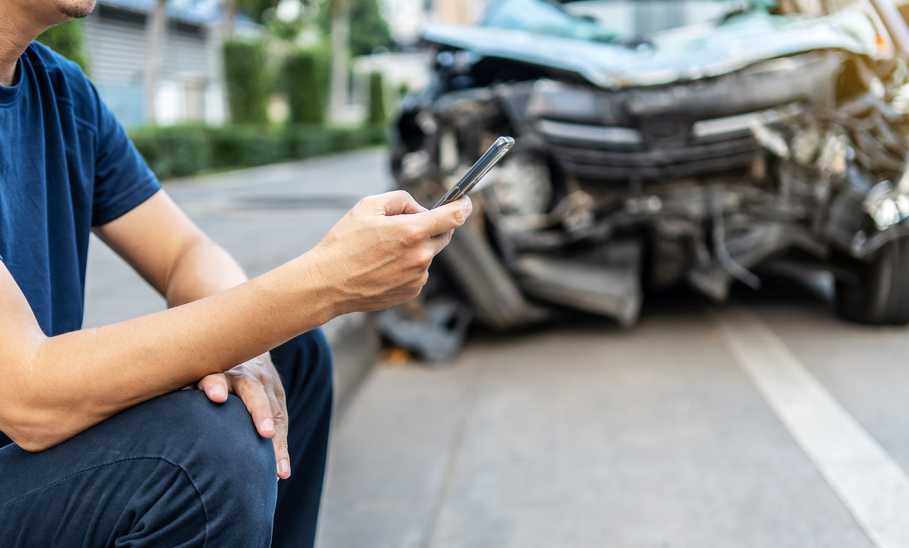At-Fault vs. No-Fault Accidents: What to Know

Our evaluations and opinions are not influenced by our advertising relationships, but we may earn a commission from our partners’ links. This content is created by TIME Stamped, under TIME’s direction and produced in accordance with TIME’s editorial guidelines and overseen by TIME’s editorial staff. Learn more about it.
When there's an auto accident, most people believe that someone is at fault. In fact, fault often determines whose insurance pays for the damage and injuries. However, some accidents are considered "no-fault accidents," where the insurance company cannot assign blame to one party. We compare at-fault vs. no-fault accidents, where the rules apply, and how auto insurance is handled with both types of accidents.
In an accident, investigators attempt to assign blame to one or more participants. This allows them to determine who is responsible for the damage and injuries resulting from the accident. However, not all states are "at-fault" states. Many are "no-fault" states, which means that all drivers must carry something called personal injury protection (PIP). PIP insurance covers the medical expenses of the insured and their passengers, no matter who is at fault.
As part of their investigation, insurance-company claims adjusters will speak with the parties involved in the accident and any available witnesses. The adjusters also review police reports (if one was filed), applicable state laws, and photos of the vehicles and the surrounding environment.
Sometimes, determining who is at fault is straightforward, while other accidents are harder to sort out. In some cases, one of the parties to the accident admits it was their fault. If nobody admits blame, the adjuster relies on their expertise to make a determination of at-fault vs. no-fault for the accident.
In many states, a determination is made to assign blame to one or more drivers involved in an accident. When a driver is determined to be at fault, their car insurance company bears the burden of paying for property and injury claims.
Sometimes, the blame may be shared between two or more drivers. When that happens, their insurance policies are liable for claims in proportion to their fault.
Thirty-eight states assign fault when there is an accident. These states follow "tort" law, which requires the person at fault to cover the damages and medical costs of those affected by their actions.
Although these 38 states use the "at-fault" designation for insurance, you can still obtain Personal Injury Protection (PIP). The list of states offering PIP coverage as an add-on or that allow you to choose between traditional auto insurance and at-fault insurance is mentioned below.
In no-fault states, drivers must purchase Personal Injury Protection (PIP) insurance coverage. These policies cover the driver and their passengers for medical claims and wage loss without involving the other driver's insurance coverage. This approach speeds up the claims process since it doesn't require an investigation into whose fault the accident was. If the bodily injury claims exceed your PIP coverage limits, the other driver's insurance may need to cover the excess medical expenses.
When you get into an accident in a no-fault state, the at-fault driver's insurance still covers property damage claims.
If the state laws determine there is shared blame for the accident, they dictate what proportion each driver's insurance must pay for property damage or injury claims.
According to Liberty Mutual, the following 12 states have pure no-fault insurance laws:
Puerto Rico also requires PIP coverage for its no-fault insurance laws.
Liberty Mutual lists 11 states and districts where this PIP add-on coverage is optional:
Additionally, three other states allow drivers to choose between a traditional auto policy or no-fault insurance.
Keep in mind that state laws change regularly. Contact your insurance agent to determine if you live in a no-fault state.
You must protect yourself against blame or financial obligation if you are not at fault. Take notes and photographs documenting the accident as if you were to blame. This will benefit you if the other driver's insurance company or attorney tries to redirect blame to you.
Follow these simple steps when you're in an accident, whether or not you are at fault.
Depending on where your car stopped, you may still be in danger of being hit by other vehicles. Pull over to the side of the road if possible. Be careful when walking around the vehicle to assess damage, take pictures, or talk to the other driver or witnesses. If you're standing too close to the road, other vehicles may not see you or your passengers.
Request that a police officer arrive to file a police report. This independent third-party assessment of the situation and applicable traffic laws can help assign blame. The officer's presence can also help calm upset drivers and avoid further conflict.
Collect and share name, address, phone number, and license plate number. Write down the make, model, and color of the vehicle as well. Also, copy the other driver’s insurance company name, policy number, and phone number.
Use your camera or phone to take pictures of both vehicles, the other driver, witnesses, damage to vehicles and property, license plates, and the surrounding environment. Note the accident scene's weather, intersection details, number of lanes, speed limit, and other important factors that might indicate which driver is at fault.
Aside from exchanging information, limit your communication with the other driver. Your words during an emotional time can be used against you when assigning blame. Even saying the words "I'm sorry" could implicate you as being at fault in the accident.
File an insurance claim as soon as possible while the facts are still fresh in your mind. The sooner you file your claim, the sooner it can be processed. This expedites the handling of your vehicle repairs and coverage for medical expenses. Your insurance company may provide towing service (if needed) to an approved repair facility.
Each state has its own laws regarding when to inform the DMV of an accident. Check with your DMV to determine if you must file an accident report there. Be aware of filing deadlines to ensure that it is filed in a timely manner.
Representation by an attorney can protect your rights and obligations with the other driver and your insurance company. Many attorneys offer a complimentary consultation to discuss the details of your case. Additionally, attorneys may work on a contingency basis, so you don't have to worry about out-of-pocket expenses.
In most states, drivers must purchase car insurance to cover injuries to others and damage to other vehicles and property. If you have a loan against your vehicle, the lender may also require you to purchase insurance covering damage to your own vehicle. This protects you and ensures that the lender is repaid if your car is damaged or totaled.
When you get into an accident, which driver is at fault determines the role of your insurance company. The following scenarios offer examples of which insurance companies pay claims after an accident.
In an at-fault state, the insurance policy for the at-fault driver covers claims for everyone involved, including property damage and medical expenses.
In a no-fault state, all drivers are required to purchase Personal Injury Protection (PIP) coverage. These policies cover the medical expenses of the insured and their passengers. The other driver's insurance is not involved unless your medical claims exceed coverage limits.
The at-fault driver is still responsible for property damage due to the accident. The at-fault driver's insurance covers vehicles and any other property damaged.
Even when you are not at fault, you should still document every aspect of the accident. Lawyers and insurance companies representing the other driver may attempt to assign some or all of the blame on you. Even if you're not making a claim, it is wise to contact the police, your insurance company, and the DMV to file an accident report.
Negligence is the legal term for assigning blame in an accident. Three primary forms of negligence affect personal injury claims from an accident:
Depending on your state, you’ll either have at-fault or no-fault car insurance on your vehicles. Some states also allow you to purchase add-on coverage or choose between traditional and no-fault policies. When you're in an accident, no-fault coverage expedites coverage for medical expenses since each person's policy covers their respective injury claims. However, property damage claims are still the responsibility of the driver at fault. Sometimes, there is shared blame, and the claims are divided proportionally among each driver's insurance coverage.
Many states have no-fault accident laws that dictate whose insurance pays for medical claims arising from an accident. In a no-fault state, every driver must carry Personal Injury Protection (PIP) insurance. A PIP policy covers the medical expenses (up to policy limits) of the insured and their passengers when an accident occurs.
Personal Injury Protection (PIP) coverage covers your medical expenses and lost wages if you're in an accident. When determining your coverage limits, consider your other sources of coverage and their deductibles, including health and life insurance. Depending on your state, the primary coverage for medical claims may be PIP or health insurance, and your health insurance deductible may apply.
Any type of accident can affect how much you pay for car insurance. Even if you are not at fault, insurance companies assume you are more likely to get into an accident in the future and will adjust your premiums accordingly. However, the premium increase will be less than if you were at fault in the accident.
The information presented here is created by TIME Stamped and overseen by TIME editorial staff. To learn more, see our About Us page.



